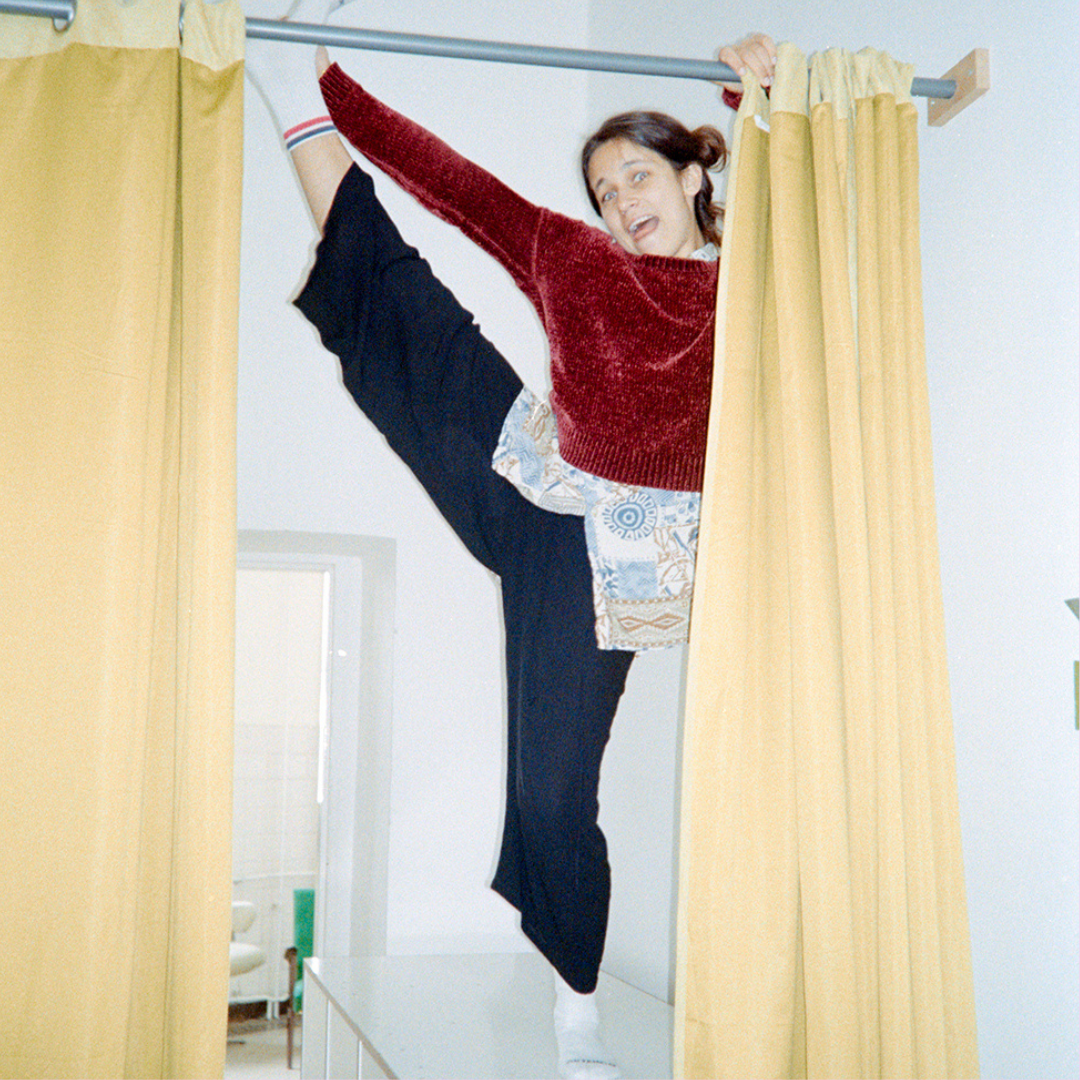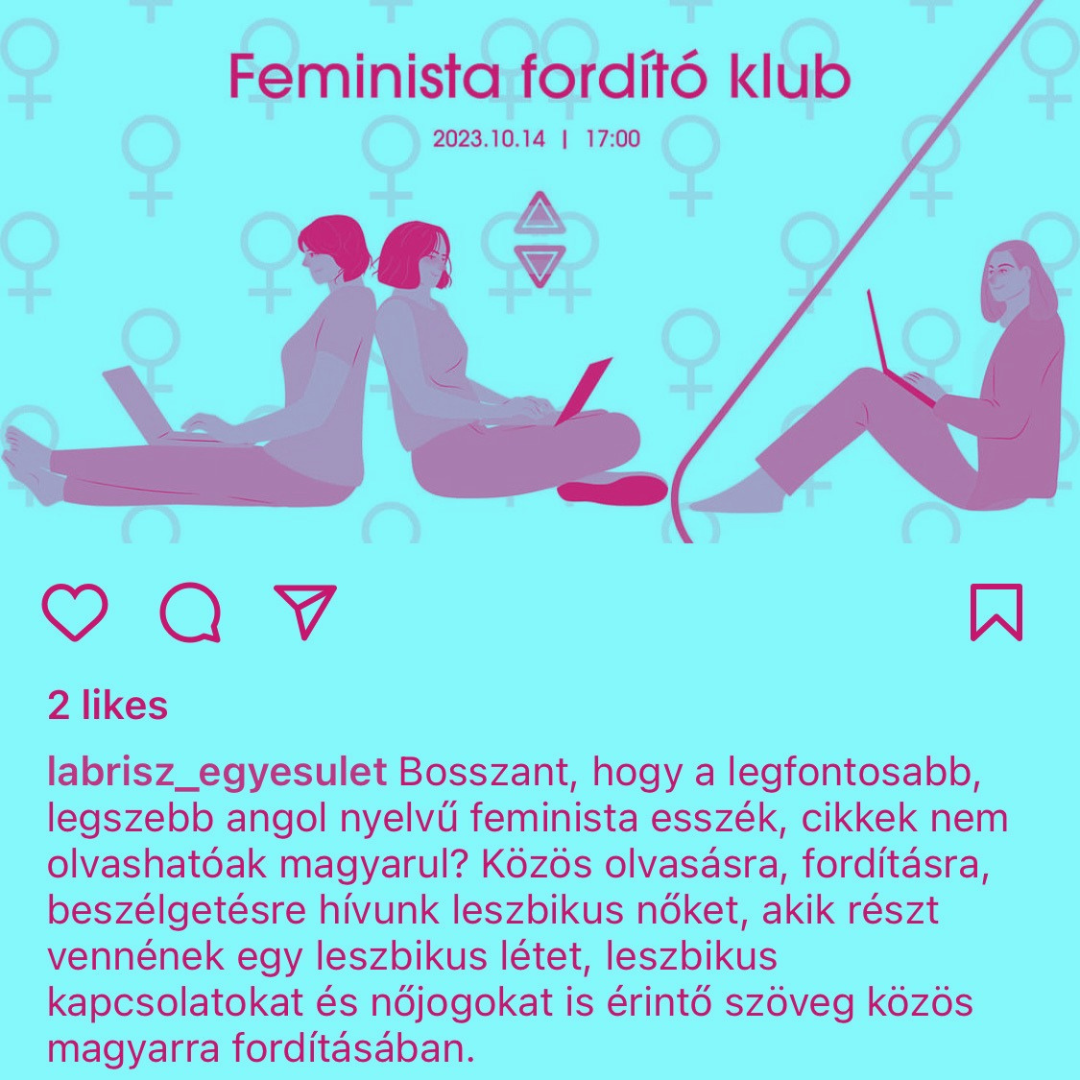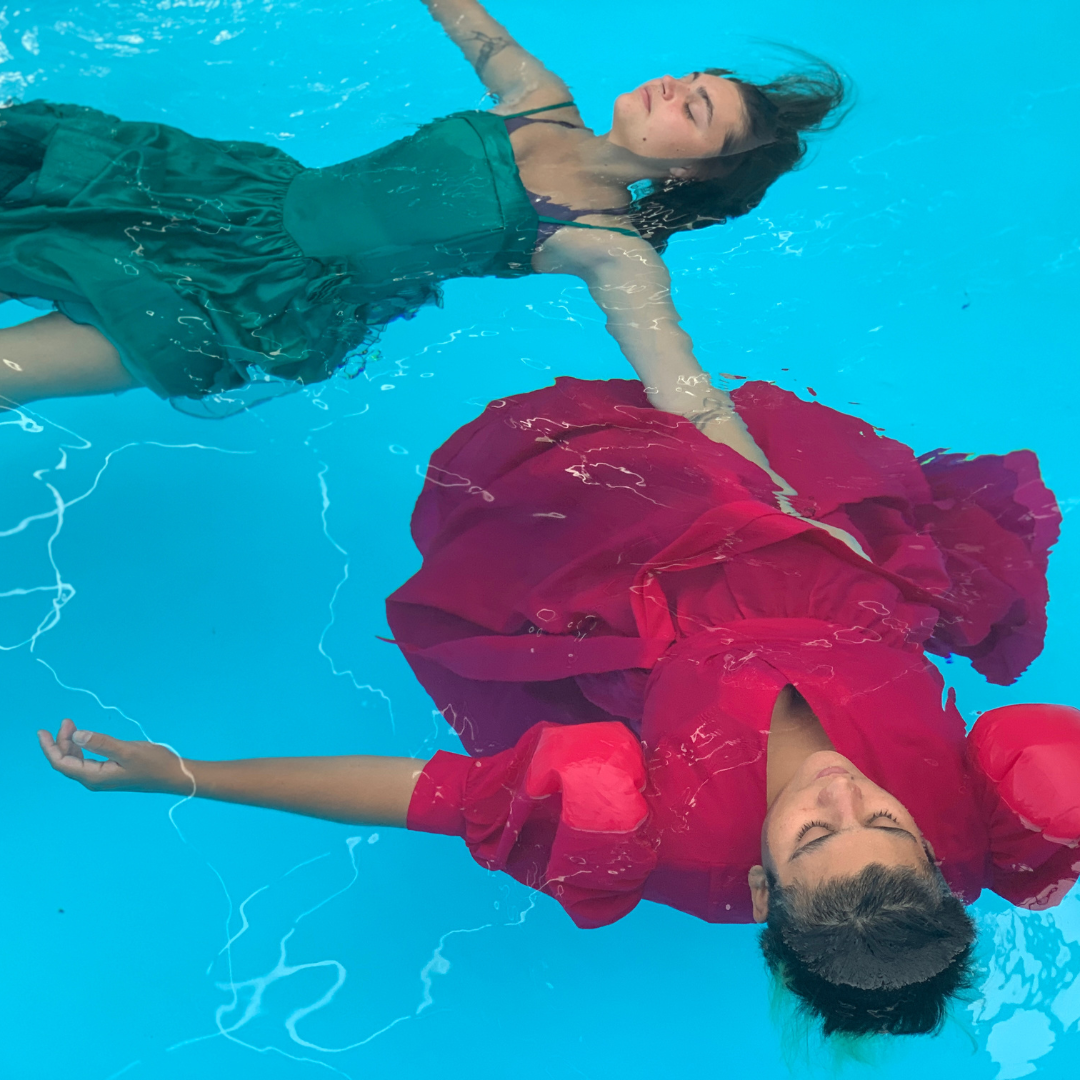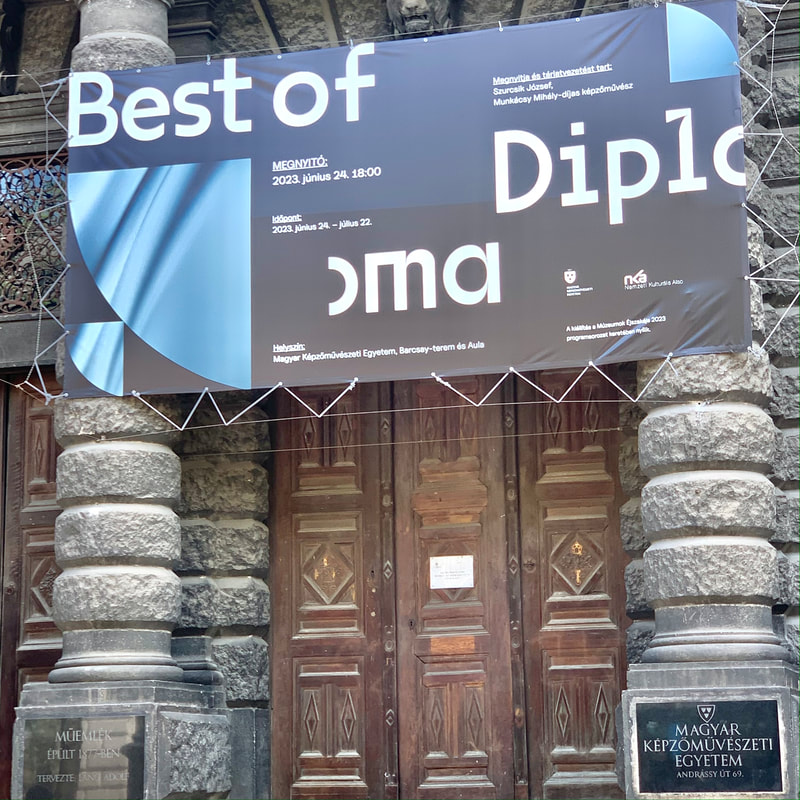|
During my time teaching at the Academy of Fine Arts in Vienna, my students often questioned the role of artists in our world. In my view, the artist's role is to illuminate the complexity of existence. Unlike political rhetoric, religious doctrines, or dogmatic ideologies, which often simplify and distort reality to fit specific agendas or beliefs, artists strive to reveal the multifaceted nature of our world.
Political rhetoric frequently reduces complex issues to binary choices or slogans, aiming to persuade or mobilize rather than to explore nuance. Similarly, religious and ideological dogmas can impose rigid frameworks that simplify the complexities of human experience into clear-cut truths. These approaches often neglect the subtleties and contradictions inherent in our world, which can lead to a diminished understanding of the richness and diversity of life. In contrast, artists emphasize the intricate interconnections and layered dimensions that constitute our reality. They challenge reductive narratives by presenting diverse perspectives, exploring ambiguities, nuances, and different shades of gray. Through their work, artists uncover and highlight how various elements—emotional, social, cultural, and environmental—are thoughtfully intertwined, encouraging a more nuanced and pluralist vision of our existence. By engaging with art, we are invited to see beyond surface-level interpretations and to appreciate the depth and interconnectedness of the world around us. Artists provide a mirror to the complexity of our lives, prompting us to reflect, question, and ultimately, embrace the richness of our shared reality. And that's exactly why artists are dangerous and why political and religious apparatuses fear them: they have the power to challenge, question, and drive change in profound and impactful ways.
0 Comments
The power of self-empowerment in political activism
In the realm of political activism, the journey toward impactful societal change begins with self-empowerment. This foundational step is not merely about bolstering one's own confidence or abilities; it's about understanding that personal transformation is intrinsically linked to broader social movements. If you're seeking profound changes in the collective landscape, start with yourself. Individual growth serves as a powerful catalyst for societal change, and here's why. When you embark on the path of self-empowerment, you are engaging in a process of self-discovery and personal development that equips you with the tools necessary to enact change. This journey involves breaking free from limiting beliefs, challenging societal norms, and redefining what is possible. As you transform, you gain a clearer understanding of the systemic issues that plague society, allowing you to approach activism with a renewed perspective and a strategic mindset. Moreover, self-empowerment fosters resilience and adaptability—traits that are indispensable in the face of opposition and adversity. It empowers you to stand firm in your convictions, to articulate your vision for change with clarity and passion, and to inspire others to join you in the fight for justice. By prioritizing your own growth, you set an example for others, demonstrating that true change is achievable when individuals take responsibility for their own empowerment. The essential link between individual transformation and collective change At the School of Disobedience, we believe in the profound connection between individual transformation and collective change. This belief forms the cornerstone of our educational approach, guiding students to recognize the potential of their personal growth as a driver of societal transformation. Individual growth is not just a personal journey; it is a crucial component of societal evolution. Every personal breakthrough, every shift in mindset, and every act of self-improvement contributes to the broader tapestry of social progress. As you undergo your own transformation, you develop a deeper awareness of the interconnectedness of human experiences and the role you play in shaping the world around you. This awareness is what fuels collective change. When individuals commit to their own transformation, they become catalysts for broader societal shifts. Their actions inspire others to question the status quo, to challenge oppressive systems, and to imagine new possibilities for the future. The ripple effect of individual transformation extends far beyond the self, permeating communities and igniting movements that demand justice, equality, and freedom. The School of Disobedience empowers students to embrace their potential as agents of change. Through a curriculum that emphasizes both learning and unlearning, we encourage students to explore their own narratives, confront their biases, and redefine their roles in society. By aligning personal growth with collective action, we cultivate a culture of empowerment that transcends traditional boundaries and fosters meaningful change. In conclusion, self-empowerment and individual transformation are not isolated endeavors; they are the building blocks of a more equitable and just society. At the School of Disobedience, we challenge you to embark on this transformative journey, to harness your personal power, and to become a catalyst for the change you wish to see in the world. Together, we can dismantle the systems that hold us back and create a future where everyone has the opportunity to thrive. Q & A with Anna Ádám, Founder of the School of Disobedience
Q: Anna, could you tell us about the inspiration behind founding the School of Disobedience? A: The School of Disobedience was born out of a deep commitment to challenge conventional norms in art education and beyond. It merges my passion for creation, research, non-formal education, and community activism into a cohesive vision aimed at fostering personal and social transformation. Q: How does the School of Disobedience integrate non-formal interdisciplinary performance art education? A: Our Multidisciplinary Dance Performance Studies Program is at the heart of our educational mission. It offers a space where participants explore art not just as a skill but as a tool for personal liberation and social change. We blend embodied practices with theoretical insights to create a dynamic learning environment that encourages experimentation and critical thinking. Q: What role does empowerment play within the framework of the School of Disobedience? A: Empowerment is central to our ethos. Through our Fight Club, we utilize play fighting and self-defense as pathways to reclaiming body autonomy and voice. This practice empowers individuals to confront societal norms and stereotypes, fostering self-confidence and resilience. Q: Could you elaborate on the transformative aspect of the School of Disobedience’s retreats? A: Our summer and fall retreats are designed as spaces of transformation. Here, participants engage in activities that promote emotional and spiritual well-being, using art and community support to navigate personal and societal challenges. It’s about creating a nurturing environment where development and growth can flourish. Q: How does the School of Disobedience contribute to research in non-formal education and community activism? A: We see ourselves as a laboratory for exploring alternative approaches to education and activism. By blending artistic practices with critical inquiry, we aim to push boundaries and challenge established norms. Our goal is to contribute new insights and methodologies that can inspire broader social change. Q: What are your hopes for the future of the School of Disobedience? A: I envision the School of Disobedience as a catalyst for a more inclusive and liberated society. My hope is to continue reaching more individuals who seek to explore their creativity, reclaim their agency, and challenge the status quo. Together, we can co-create a world where disobedience becomes a powerful tool for personal and collective transformation. For years, I've been turning down institutional requests disguised as "theater education programs" or "museum pedagogy workshops." These methods, with their demagogic smiles, infantilize and playfully manipulate audiences of children, adults, seniors, or marginalized groups. "Taste-shaping" becomes propaganda and manipulation, especially when institutions mold artists into producing similar works that fit their own agenda. Convincing people that this is "the" art, or this is how it "should" be interpreted, is akin to telling someone what to think, what qualifies as art, what to applaud, and when. These sessions don't aim to foster critical thinking; instead, they promote indoctrination and dogmatic worship.
Most museum pedagogy and theater education programs can be seen as mere sales strategies—a means to expand the institution's target audience and promote the artists it represents. But in terms of pedagogy and education, they're utterly irrelevant—don't be fooled! In fact, neither theater education programs nor museum pedagogy would be necessary if artists created art directly for their audience, rather than relying on intermediaries like curators, critics, and art historians who interpret and explain artworks in cryptic language. These intermediaries are like translators decoding jargon and unraveling academic puzzles. But why? I believe that, eventually, artists will create directly for their audience rather than for intermediaries. They won't aim to please a narrow circle but to reach broader audiences. They won't seek to prove themselves but to connect. They won't close off but open up. They'll share and give. To achieve this, I think we need a radical transformation in academic art education. Artists must be socialized in a platform where they learn to break free from conventions. They shouldn't aim to fit into art history but to break out of it. They shouldn't seek continuity and assimilation but rupture. They shouldn't look back to the past, rely on existing rhetoric, follow trends, or boast about following someone else's path. Instead of writing a new chapter in the book, they should come up with something entirely new. Therefore, what we need today is an art education that doesn't produce cannon fodder but independent and critical artists who create freely, experiment boldly, and aren't afraid to explore new territories. The School of Disobedience is exactly that. Alkotóként folyamatosan döntések előtt állunk. Folyamatosan kérdések merülnek fel bennünk, és nekünk az a dolgunk, hogy ezekre egy ponton választ adjunk: kikkel dolgozzunk, hogy kezdődjön a darab, hogy végződjön, a kutató folyamatból mit tartsunk meg és mit kukázzunk ki, mi legyen a jelmez, legyen-e díszlet, használjunk-e kelléket, hol adjuk elő, kiket szólítsunk meg...
Állítólag a művészeti iskolákban majd megtanítanak arra, hogy hogyan hozzál meg ezekre a kérdésekre “jó” döntéseket. Állítólag. De szerintem ez baromság. Én nem gondolom, hogy a művészetben lennének “jó” vagy “rossz” döntések. Egyszerűen csak döntések vannak, amikbe alkotóként beleállunk és kész. Ezeknek a döntéseknek egy részét tudatosan fogjuk meghozni, diktál majd a "józan ész", a logika meg a racionalitás, a kontextus, a rendelkezésre álló forrás, ilyenek. De lesz egy része, amiket csak úgy meghozunk, nem igazán tudjuk miből, miért. Van, aki ezt tehetségnek hívja, van, aki megérzésnek, intuíciónak, más tudatalattinak. Lényeg, hogy az alkotófolyamat során meg fogsz hozni döntéseket, néha fogalmad sincs miért. A nyugat-európai kortárs művészeti kánon arra szocializál, hogy a tudatalattiból meghozott döntéseknek is tudatosnak kell lenniük. Ezért elkezdesz koncepciót “gyártani”, próbálsz ráhúzni racionalitást arra, ami pont arról szól, hogy nem az. Próbálsz logikát vinni abba, ami nem logikus. Próbálsz érveket csinálni az érzelmekből. Magyarázatot találni arra, amit nem kell megmagyarázni, mert talán nem is lehet. A nyugat-európai kortárs művészeti kánon arra szocializál, hogy egy művész minden kérdésre tudjon válaszolni a munkájával kapcsolatban. A kánon szerint olyan nincs, hogy "nem tudom". Mintha bizalomra és önbizalomra csak akkor lennél jogosult, ha bármilyen felmerülő kérdésre konkrét válasszal tudsz szolgálni, kész a meggyőző "pitch", tisztán, érthetően és logikusan tudsz beszélni arról, amit állítólag egészében átlátsz. A művészettörténet is erre a mítoszra épít, hogy alkotásokat ánblokk meg lehet magyarázni. Ez egy hazugság. A munkáink egy része vakfolt, egy fekete lyuk, amit rengeteg ellentmondás, kétely, irracionalitás övez, és pont ettől érzékeny, pont ettől törékeny, hogy helyenként ködös és megmagyarázhatatlan. A konceptuális művészeti irány és a jelenlegi retorika-alapú prezentációs diszpozitív arra sarkallja a művészeket, hogy azt hazudják minden alkotói gesztus mögött van racionális magyarázat. Pedig tudjuk jól: nincs. A konceptuális művészet megúszós művészet: elbújsz elméletek mögé, távolságot hozol létre, nem közeledsz. Se magadhoz, se a közönségedhez. Kívül maradsz, úgy csinálsz, mintha. Azért absztrahálsz, mert nem mersz megnyílni, azért operálsz a társadalomnak csak egy privilégizált szegmense által ismert nyelvi és esztétikai kódrendszerrel, mert a nyugat-európai kortárs művészeti kánon jelenleg teljesen érzéketlen az érzelmekből fakadó esetlegességre. Jogos, hogy nem mersz megnyílni, ki merne ebben az ellenséges környezetben? Érthető, hogy nem vállalod fel az érzelmeidet, ki vállalná fel ebben az elnyomó, itélkező és kirekesztő kortárs művészeti mezőben? Ahhoz hogy lépjünk, hogy a kamu konceptuális művészetből egy érzékeny és bizonytalan művészet felé közeledjünk, el kell kezdenünk nyitni, elfogadni és bízni. Az Engedetlenség Leányiskolája ehhez kíván bátor és biztonságos közeget teremteni. Many artists are paralyzed by the fear of not succeeding, which prevents them from even trying. This fear can be deeply ingrained, stemming from early life experiences where failure was met with harsh criticism or punishment. Over time, this can create a mental block that convinces you that failure is a reflection of your worth as an artist. The fear of failure can also be amplified by the competitive nature of the art world, where rejection is common and success can feel elusive.
At the School of Disobedience, we create a safe and supportive environment where we encourage experimentation and risk-taking, helping you to redefine failure as a stepping stone to success—whatever success means to you. It's crucial to see failure as an opportunity for growth and learning. Failures don't define you; how you respond does! Embrace the idea that each failure brings you closer to your true potential, providing valuable lessons that help you refine your craft and strengthen your resilience. Nem az bosszant, hogy a “legfontosabb” feminista esszék nincsenek lefordítva, hanem az, hogy azokat az esszéket, amikről azt gondoljuk, hogy hazai viszonylatban a “legfontosabbak”, külföldről vásároljuk.
Én a lokális feminizmust támogatom, fordító klub helyett esszé író kört, ahol magyarul gondolkodunk a saját nyelvünkön a saját problémáinkon. Nem fordítani akarok, nem más kontextusban, más kultúrkörben, már történelmi háttérben megfogalmazott kész gondolatokat importálni. Magyar feminizmust akarok magyarul. Mert képesek vagyunk rá! *** Borzasztóan károsnak tartom a fordító klub koncepcióját a mi kelet-európai kontextusunkban, ahol edukatív környezetben kicsi korunk óta azt tanuljuk, hogy nyugaton jobban tudják, hogy ami nyugatról jön, az az “igazi”, az jobb, értékesebb, fontosabb. Ez egy óriási “unlearning” lecke, megtanulni értékelni a hazait, nem alámenni, nem behódolni, nem lemásolni, nem bambán behozni külföldről a dolgokat, főleg egy olyan aktuálpolitikai helyzetben, amiben szinte minden, ami magyar vonatkozású, egyből megkapja, hogy "nacionalista". Én ezen gondolkodnék veletek szívesen, az egészséges nemzeti öntudaton. Hogy merjünk hozzányúlni a saját nemzeti értékeinkhez, nyelvünkhöz, kulturális örökségünkhöz lealacsonyítás, ítélkezés és bűntudat nélkül. Hogy bízzunk magunkban, merjük bátran nyomni a "Made in Hungary"-t. Gondolatok terén is. The idea of the convergence of struggles ("convergence des luttes") sounds appealing, but in reality, it often serves to dissuade, exhaust, and dilute small-scale grassroots initiatives. This stems from the misguided belief that success is tied to size. But what if success had nothing to do with scale?
Building a coalition in the pseudo-independent, highly competitive, oppressive, and toxic local activist milieu often means being swallowed by an opaque machine with unfocused ambitions. This process can lead to abandoning original objectives for a supposedly nobler, transversal goal. But is there really such a thing as a noble or nobler cause? Are causes subordinate to one another? Is one goal more important than another? According to whom? Political activism is not about subsets or hierarchies. There are no "sub-causes" or "main causes," no cause-pyramid or cause-hierarchy. Such notions are nonsensical. Activism isn’t a pie where other initiatives reduce your impact. You don’t have to unite just because someone else is involved. More people together doesn't necessarily mean increased effectiveness. Political activism isn’t an entertainment industry; it’s not about ticket sales. The number of participants doesn't inherently determine success. Joining a coalition often means scaling up. While you may seem louder on the outside, internally, you may start to feel an echoing emptiness as the space becomes increasingly hollow. Have we sacrificed our essence to unite when we were already united in spirit? We aimed to grow but have shrunk in essence. There is always a critical mass in political activism. The language around coalition-building, reminiscent of capitalist logic, pushes small organizations and grassroots initiatives to grow, develop, and expand. Yet, it’s clear from the outset that if a small organization outgrows itself, it will sooner or later lose its voice, its way, and its heart. Given this, is the push for coalition not a deliberate strategy to cannibalize, a demagogic weapon of internal destruction? We don't need to grow to exist. We don't need to unite to have a stronger voice. We don't need to be loud to be visible. We don't need to be visible to make things happen. The two most effective weapons in political activism today are free and legal: invisibility and unpredictability, both privileges of small organizations. This may be why there’s such a cult of coalitions and why cheap tricks are used to absorb and then destroy small organizations. Small organizations are dangerous when they remain small, but when they grow, they only become loud. The soul is lost in growth. A küzdelmek egyesülése (“convergence des luttes") elsőre jó ötletnek tűnhet, de a valóságban ez a kis méretű kezdeményezések felhígítását majd feloszlását szolgáló bedaráló stratégia, ami ha belegondolsz elsősorban arra a nagyon buta tévhitre épül, hogy valami akkor sikeres, ha nagy. Mert mi van, ha nem?
Koalícióra lépni a hazai versenyszellemű ál-független egymást elnyomó és kizsigerelő aktivista közegben annyit jelent, hogy lassacskán bekebelez egy átláthatatlan, homályos gépezet, egy kamu címszavakkal dobálózó steril maszlag része leszel fókuszálatlan törekvésekkel, ahol feladod az eredeti célkitűzéseidet egy állítólagosan nemesebb transzverzális célért. Mert ez verseny? És van nemes és nemesebb ügy? És ezek egymás alá-fölé vannak rendelve? Az egyik cél fontosabb, mint a másik? Mitől? Ki szerint? A politikai aktivizmus nem részhalmazok kérdése, nem vagy automatikusan egy ügy “részese”, nincsenek al-ügyek meg fő-ügyek, nincs ügy-piramis meg ügy-hierarchia, ez hülyeség. A politikai aktivizmus nem torta, nem jut neked egy ügyből kevesebb csak azért mert más is foglalkozik vele. Csak azért, mert más is foglalkozik vele, nem biztos, hogy egyesülni kell, egyáltalán nem biztos, hogy együtt hatékonyabbak lesztek. A politikai aktivizmus nem jegyáras szórakoztatóipar, itt nem a résztvevők száma a lényeg. Tök mindegy, hányan vagytok, de tényleg. Koalícióra lépni annyi, mint nőni, léptéket váltani. Lehet, hogy kívülről hangosabbnak tüntök majd, de belülről egyszer csak elkezdesz kongani: apránként visszhangozni kezd az egyre csak üresedő belső tér... Feladtuk önmagunkat, hogy egyesüljünk, mikor mi már egyszer egyesültünk?! Feladtuk önmagunkat, hogy növekedjünk, csak hogy a lényeget tekintve nem nőttünk, hanem zsugorodtunk. A politikai aktivizmusban mindig van egy kritikus méret. A koalíciót körülölelő kapitalista logikára emlékeztető szemantikai mező növekedésre, fejlődésre, terjeszkedésre buzdítja a kis szervezeteket, alulról jövő kezdeményezéseket, miközben az első perctől egyértelmű, hogy ha egy kis szervezet túlnő saját magán, előbb-utóbb el fogja veszíteni saját hangját, útját, létjogosultságát. Mivel ez kezdettől fogva világos, felmerül a kérdés, hogy vajon a koalícióra való serkentés nem szándékos kannibalizáció-e, vagyis a belülről történő megsemmisítés demagóg retorikai fegyvere? Nem muszáj növekednünk ahhoz, hogy létezzünk. Nem muszáj összefognunk ahhoz, hogy legyen hangunk. Nem muszáj hangoskodnunk ahhoz, hogy észrevegyenek. Nem muszáj láthatónak lennünk ahhoz, hogy változást eredményezzünk. Politikai aktivizmusban jelenleg a két leghatékonyabb fegyver ingyenes és legális: a láthatatlanság meg a kiszámíthatatlanság, mindkettő a kis méretű szervezetek kiváltsága. Talán ez az oka ennek az egész manipulatív koalíció-kultusznak, talán ezért próbálják olcsó trükkökkel beolvasztani, majd megsemmisíteni a kis szervezeteket: mert kicsiként még veszélyesek, viszont ha megnőnek már csak hangjuk van. A lélek elvész a növekedésben. Méricskélés, összehasonlítás, és egymás alá-fölé rendelése helyett egy olyan művészeti oktatási rendszert, ami nem hierarchiában, győztesekben-vesztesekben gondolkodik.
Ami kinyit, és nem kizár. Ami elfogad, befogad, és nem megsemmisít, kirekeszt. Ahol nincs “jó” és “rossz”. Se “jó” és “jobb”. Ami nem feketén-fehéren látja a világot, hanem egy plurális valóságot tár a diákok elé. A “Best of” fogalma versengésre szocializál, holott egyértelműen összefogásra lenne szükség. |
Author"Born in Budapest (Hungary) in 1983, I graduated from the ENSAPC Art School (France) in 2016. As an artist, researcher, and community activist, I harness the power of art for connection, education, and activism. My practice spans various mediums, including image, object, and performance. I create full-length visual and dance performances, short-format pieces, and immersive experiences, while also creating spaces for non-formal education outside of traditional academic heritage. Over the past two decades, I've founded the School of Disobedience, established my own performance art company (Gray Box), and launched the annual Wildflowers Festival. I embrace everything unusual, unexpected, and nonconformist. I am not kind with assholes and have learned to forge my own path. I am here to guide you in thinking outside the box and achieving independence. To me, the real party is outside the confines of the established canon." Archives
July 2024
Categories
All
|










 RSS Feed
RSS Feed